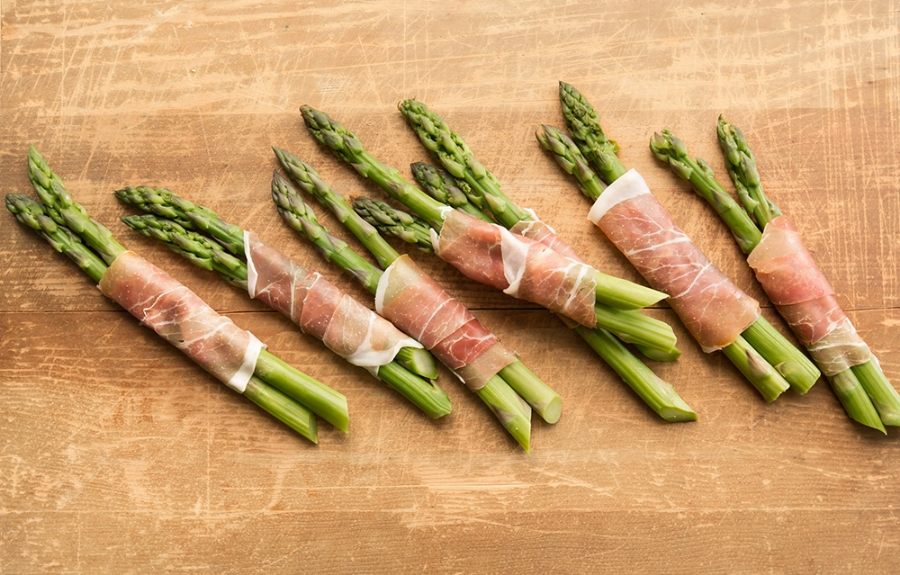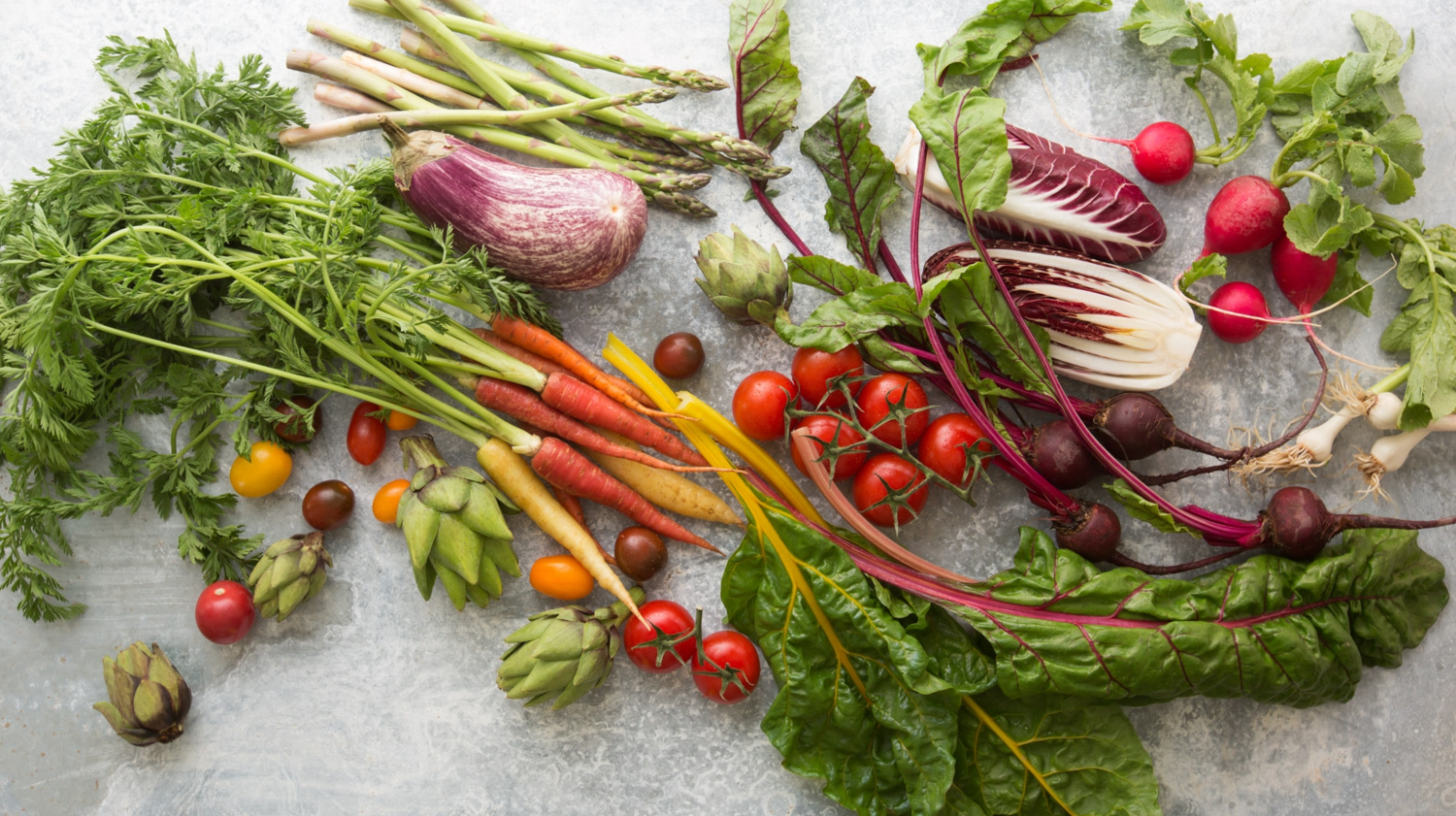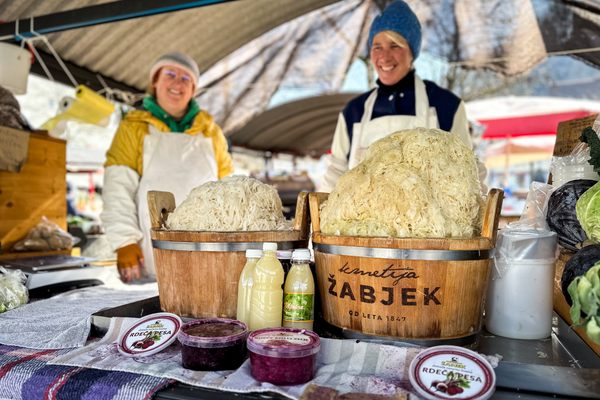Pizza Doesn’t Really Stretch That Way, And Other Devious Food Stylist Tricks

What are they hiding? (Photo: William Heuberger, Food/Prop Styling: Lisa Homa)
Everyone needs a little help to look their freshest. Celebrities have makeup artists, Instagrammers have filters, and food has food stylists: professionals who make their living making the comestibles that populate our magazine spreads, billboards, and cookbooks appear as tasty as possible. Food stylists work their magic with discerning eyes, quick hands, and, often, culinary degrees—but, as with any trade, they also have a few tricks.
All of the food stylists I spoke to were quick to point out that, in the scheme of things, contemporary food photography includes very little fakery, and almost nothing inedible. The days of flash-roasting a turkey and painting the outside golden-brown to hide wrinkles are over, according to New York-based stylist Lisa Homa, who says clients have preferred “a very natural approach” for the past 10 years.


Seasonal veggies, reveling in their unadorned splendor. (Photo: William Heuberger, Food/Prop Styling: Lisa Homa)
As a result, the most crucial part of most shoots is the shopping.
“I tell my students all the time, ‘I hope you liked going on scavenger hunts as a kid,’” says TV food stylist Louise Leonard, who teaches at the International Culinary Center. “I spend the majority of my time running around to every supermarket, farmer’s market, specialty store, butcher shop, bakery, florist, [and] prop house, schlepping groceries all over the place, calling to source weird ingredients that aren’t in season, and so forth.”
Peeled eyes are crucial for the success of the shoot: “I’ll look for certain colors in apples, or I’ll pick a pear because it’s got a beautiful coloring or a beautiful shape,” says Homa. “And that’s what makes the shot.”
That’s all well and good for figs and radishes—but what about the meltier, goopier, more finicky foods? Some of those still can’t take the spotlight without a bunch of help. Here are a few comestibles that need an extra round of primping.
Herbs: Fresh to Death
![Can't fool me, artfully sprinkled green stuff atop salmon atop soup. (Photo: [TK]/Lisa Homa)](https://img.atlasobscura.com/45mF8LvamfPb8-wDDFdvw7y0l_t7MNdkEH4lN2wRdDs/rs:fill:12000:12000/q:81/sm:1/scp:1/ar:1/aHR0cHM6Ly9hdGxh/cy1kZXYuczMuYW1h/em9uYXdzLmNvbS91/cGxvYWRzL2Fzc2V0/cy9iMzdiNjA1ZDE1/YjlkMzkyOTdfdW5u/YW1lZC5qcGc.jpg)
Can’t fool me, artfully sprinkled green stuff atop salmon atop soup. (Photo: Paul Brissman, Food/Prop Styling: Lisa Homa)
There’s nothing like some zesty green specks to lend a roast or stew that extra zing. But, as any indoor gardener knows, it’s difficult to keep just-cut herbs at their spriggy best. When Leonard needs hers to last, she herb-hacks by sticking the stems in water fortified with a splash of dish soap. (She also covers the leaves with wet paper towels and a plastic bag, and sets everything in a warm part of the fridge—“they will last for a few days” that way, she says.) While supertasters may not care if their cilantro is foamy, the rest of us probably wouldn’t go for it, which gives herbs a solid spot in the “fakers” category.
Drinks: Melty and Dull
![That ice could be real or plastic. Only one way to find out, right? (Photo: [TK]/Lisa Homa)](https://img.atlasobscura.com/BTL0OurOxWbjtyR-uvy-1KWMirVfwfLD_YPfPu0-9Gs/rs:fill:12000:12000/q:81/sm:1/scp:1/ar:1/aHR0cHM6Ly9hdGxh/cy1kZXYuczMuYW1h/em9uYXdzLmNvbS91/cGxvYWRzL2Fzc2V0/cy9kNWVmMTVmOWMz/MWRmYjc0NWFfT2xk/X0Zhc2hpb25lZC5q/cGc.jpg)
That ice is real—you can tell by the white accents. But there’s only one way to be sure… (Photo: Alyssa Kirsten, Drinks Styling: Lisa Homa, Prop Styling: Frances Bailey)
Those refreshing-looking drinks making eyes at you throughout the summer, with their droplet-beaded glasses, gleaming ice cubes, and rakish garnishes? Better watch out: there’s a chance they’re carefully constructed illusions—oasis mirages in the Desert of the Real.
Although in many cases stylists will “try to do everything natural and real at first,” hot-sun holdups create a need for workarounds, like plastic ice, says Leonard. (The sparkle is added digitally post-shoot.)
And that “I’m frosty!” sweat is as artificial as a Gatorade model’s. “Mix corn syrup and water, and spritz it on a glass,” says Homa. ”It’ll bead up and look like condensation, and it won’t go anywhere. I’ve done that for all sorts of beer and cocktail shoots.” (This is not, of course, to say that the drinks they’re portraying should be avoided. Stay hydrated, everyone.)
Hero Products: Very Sidekick-Reliant

I can’t believe it’s not “I Can’t Believe It’s Not Butter.” (Photo: Mark Laita, Food Styling: Lisa Homa)
The “hero product” is a variable category—it’s a catchall term for whatever is starring in a particular poster, billboard, or advertising spread. Because they’re the center of attention, most of these foodstuffs require some sort of extra oomph, whether it comes from a Photoshop brush or a ketchup syringe.
“The people that make the Big Macs for McDonalds are painstakingly sorting through buns, lettuce, sauce, meat, cheese, etcetera to find the perfect products to put together for a closeup of a Big Mac,” Leonard says. Homa remembers primping a butter substitute: “It had to have that perfect swirl on top of the tub,” she says, “so I had to take the stuff out, get it to a certain temperature, and then pipe it in just so.” Hero day is a big day—when else will your average spread get that kind of attention?
Ice Cream: The Diva of Foods
![Sometimes it's just nice to let the prima donna melt. (Photo: [TK]/Lisa Homa)](https://img.atlasobscura.com/5wBWd345yh_jLL5MawViZDbyII_0U8vmZZ1wnaP8D1s/rs:fill:12000:12000/q:81/sm:1/scp:1/ar:1/aHR0cHM6Ly9hdGxh/cy1kZXYuczMuYW1h/em9uYXdzLmNvbS91/cGxvYWRzL2Fzc2V0/cy9kNWVmMTVmOWMz/MWRmYjc0NWFfVU1f/SWNlX0NyZWFtLmpw/Zw.jpg)
Sometimes it’s just nice to let the prima donna melt. (Photo: William Heuberger, Food/Prop Styling: Lisa Homa)
When it comes to photography, there is no food so finicky as ice cream. While shutterbugs in need of a quick “à la mode” can get by with clay wrapped around a styrofoam ball, ice cream-focused shoots require the real thing—which in turn requires a bank of fine-tuned freezers, buckets of dry ice, and a team of assistants led by styling professionals who sub-specialize in the frozen treat.
“There are a couple of people who are known to do it—not many,” Homa explains. “But they can get the perfect scoop ready, put it on a card, put it in a freezer chest with dry ice, and keep it nice and hard. So they can get them ready and then bring them out when it’s time to shoot.” Afterwards, the star is either returned quickly to its frosty trailer, or devoured instantly.
Pizza: Lies, All Lies
In real life, herbs, drinks, burgers and ice cream at least vaguely look and act like their more image-conscious counterparts: your neighborhood Big Mac may not be quite so luscious as the one on TV, but it’ll still send weird sauce dripping down your chin.
Not so, alas, for pizza. A typical pizza commercial shows someone separating a slice from the pie, only to have the triangle remain attached, trailing succulent ribbons of cheese. Such imagery portrays as eminently achievable an act that can only be accomplished, in real life, by a series of elaborate, backwards-seeming tasks.
First, before the pizza is even constructed, Homa says, the naked crust is pre-sliced. Next, “the sauce is put down, and cheese is put across where the slice is coming out.” The slice is pre-pulled to create the gooey strands, she continues, “and final cheese is put on top. So when the slice is taken, it looks like they just cut it and pulled it out—but really, it was already detached.” Congratulations, pizza stylists. You had us all fooled.
Gastro Obscura covers the world’s most wondrous food and drink.
Sign up for our regular newsletter.
























Follow us on Twitter to get the latest on the world's hidden wonders.
Like us on Facebook to get the latest on the world's hidden wonders.
Follow us on Twitter Like us on Facebook